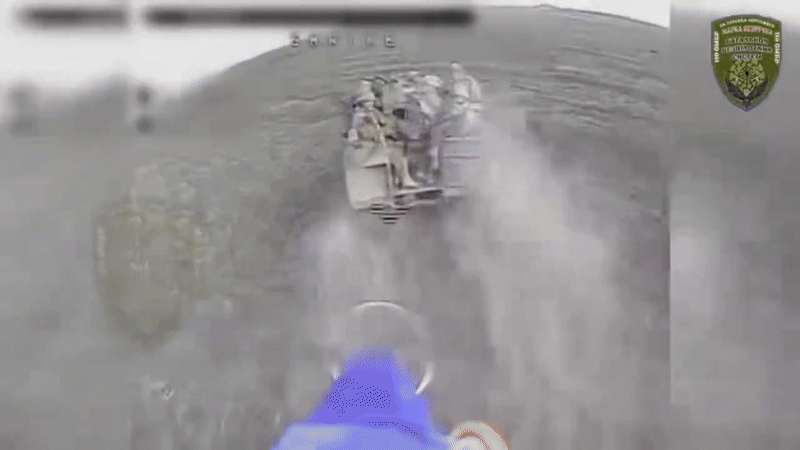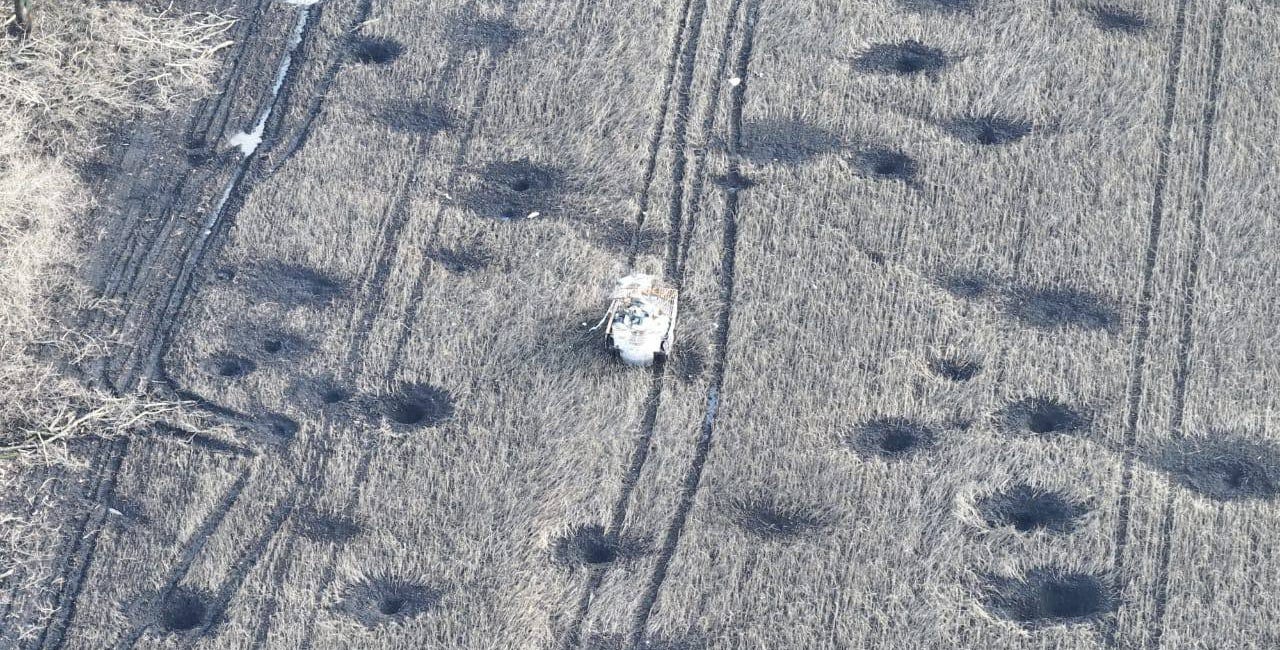A Single Ukrainian Drone Killed 10 Russians Riding In An Unprotected Truck. That Kind of Thing Is Normal Now.
But it doesn't mean Russia is losing.
To understand why, and how, Russia is losing so many people in Ukraine, observe what happened when an apparent Russian reconnaissance group probed Ukrainian lines around the ruins of Toretsk in eastern Ukraine in recent days.
Drone operators from the Ukrainian 110th Mechanized Brigade spotted the Russians riding cross-country on an unarmored, open-top vehicle. One explosive first-person-view drone struck the truck as others circled.
An image from the first FPV, in the split second before it hit, depicts 10 Russians in the vehicle. A whole squad. There’s no evidence any of them survived.
In the 38th month of Russia’s wider war on Ukraine, it’s standard operating procedure for Russian regiments to probe Ukrainian positions with squads of poorly-trained, ambivalently-led infantry riding in unprotected vehicles.
“These are ordered to advance towards where they assess Ukrainian positions to be, conducting reconnaissance by drawing fire,” Nick Reynolds and Jack Watling explained in a recent study for the Royal United Services Institute in London.
“If the group encounters resistance, Russian commanders assess where they believe the best lines of approach are, and in particular, where the boundaries between defensive units lie. If Ukrainian positions are positively identified, sections are persistently sent forward to attack positions.”
Disposable soldiers
All that is to say, the first few dozen Russian infantry in any assault are disposable. It’s their job to map out Ukrainian lines by drawing murderous fire that usually ends with their deaths.
Incredibly, 10 Russians riding pell-mell across a field in broad daylight and essentially unsupported—and then get blasted by a drone—is part of the normal functioning of the Russian battlefield reconnaissance system in the fourth year of the wider war.
It’s a costly system. According to the best estimates, Ukrainian troops killed or wounded 315,000 Russian troops through 2022 and 2023. That’s 172,000 per year.
The loss rate accelerated last year, when as many as 210,000 Russians became permanent casualties—meaning they died or left military service for good after being severely wounded or deserting. Those figures come from a recent study by Frontelligence Insight, a Ukrainian analysis group.
And according to Ukrainian commander-in-chief Gen. Oleksandr Syrskyi, another 141,000 Russians became casualties in the first 18 weeks of 2025.
So why hasn’t the Russian army collapsed? The answer may be that it is collapsing—albeit very slowly as escalating losses inexorably sap the army’s offensive combat power. Note the steady slowdown in Russian advances across eastern Ukraine since January—a loss of momentum that’s especially evident around Toretsk, where Ukrainian counterattacks have actually succeeded in reversing some Russian gains.
There’s another potential outcome, however—one that should worry Ukrainians and their allies.
If Ukraine’s own losses—100,000 dead and maimed troops a year for three years—are degrading its combat capabilities, the result could be a kind of impasse, where two exhausted combatants wearily exchange weaker and weaker blows.
That kind of impasse ultimately favors Russia, according to Frontelligence Insight. That’s because there are 38 million people in Ukraine, and 144 million in Russia. “There is a fundamental issue—Ukraine’s smaller mobilization base and poor mobilization campaign,” Frontelligence Insight warned.
The Kremlin has crunched the same numbers and arrived at the same conclusion: that Kyiv could reach a manpower breaking point first. Russian leadership therefore “believes that it can sustain the current rate of attrition through 2025,” RUSI analysts concluded.
Read more:
Russian Troops Riding in Vans And Getting Massacred by Drones—It's All Part of the Plan
It might be shocking to watch Russian troops assault across the no-man’s-land in Ukraine—only to (usually) get maimed or killed by mines, artillery and drones.







